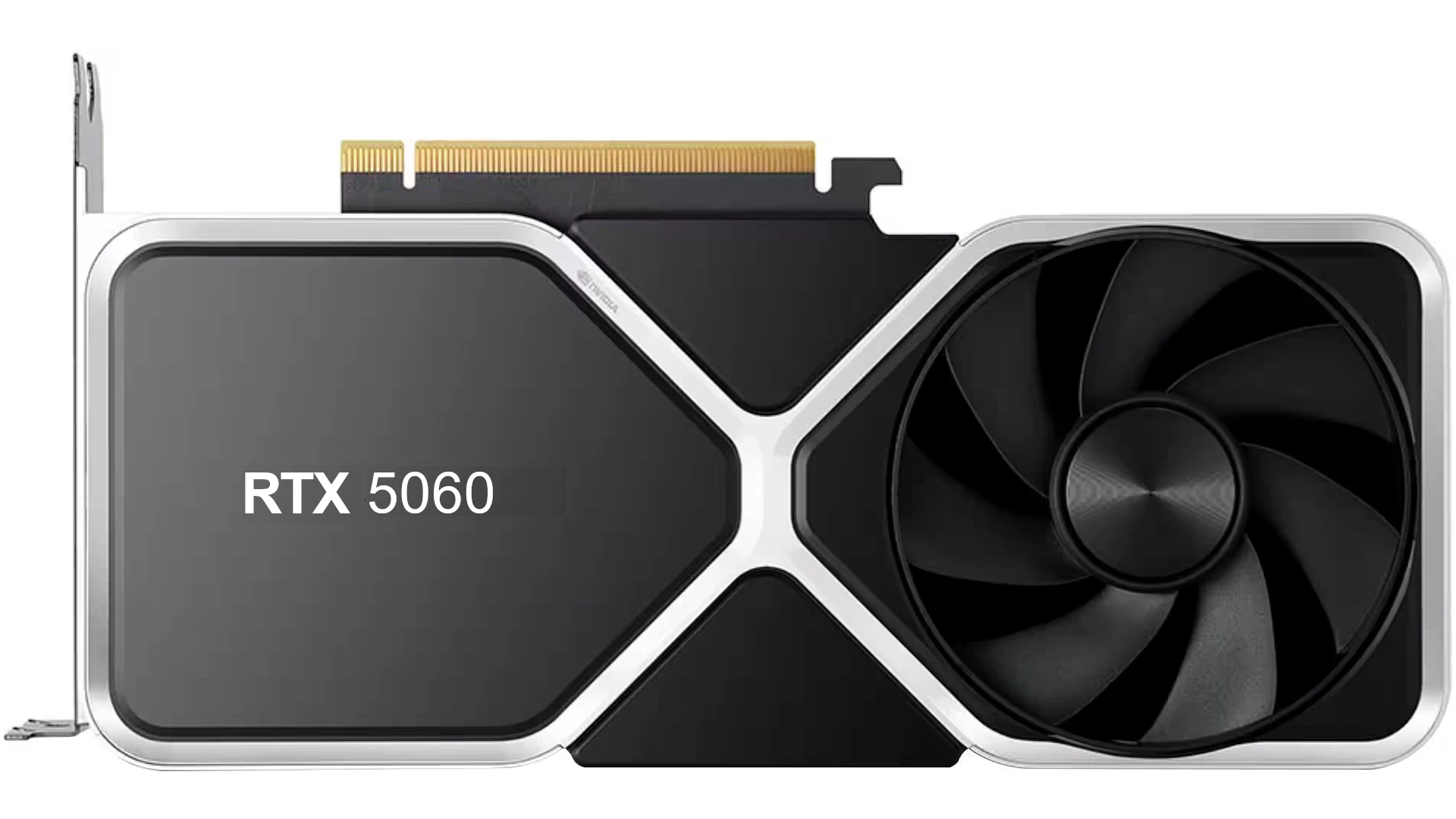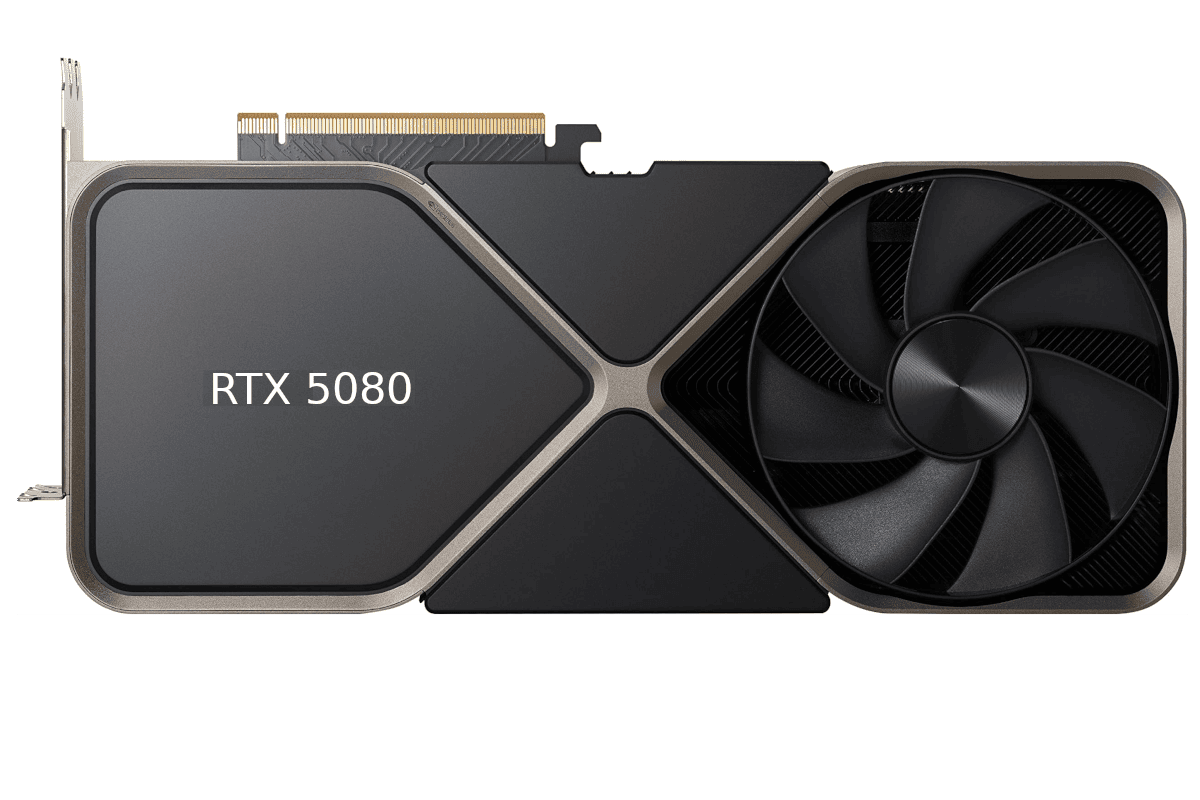NVIDIA’s upcoming RTX 5060 and RTX 5080 graphics cards have caused a huge amount of confusion and controversy in forums all over the internet – and nobody really can understand it. The leaked specifications suggest that NVIDIA plans to equip the RTX 5060 with only 8GB of VRAM and the RTX 5080 with 16GB. For reference, the RTX 5050 (entry level card) has 8GB of memory. The mid-tier RTX 5060 is supposed to deliver a much higher level of performance over the RTX 5050 but that VRAM limitation already spells trouble for people buying a card they would expect to last them several years.
On the higher end RTX 5080 card, NVIDIA offered no memory size upgrade over the previous generation model, the RTX 4080. This is almost unthinkable for a card that is going to have an MSRP of over $1200 and sell on secondary markets for closer to $1500+. Both the RTX 5080 and RTX 4080 will offer the same amount (16GB) of video memory so while gaming has only gotten more and more memory intensive, NVIDIA doesn’t seem to think games will demand more memory to use? It doesn’t really make sense.

Some are speculating that the move to limit the RTX 5080 can only be to save the sweet spot of 24GB for a future RTX 5080 Ti (or Super) release down the road. If that’s true, that’s a pretty disappointing limitation NVIDIA is putting on customers who are shelling out so much of their money to get the 2nd highest performance next-gen consumer-level card.
So yes, these specifications have led to a lot of frustration and anger within the gaming community. And rightfully so. There’s a chance that the leaks so far have all been wrong but it doesn’t seem like that’s the case. We’re only a short while away from the big reveal on January 6th, 2025 so we’ll see how this plays out and what NVIDIA’s justification ends up being.
NVIDIA RTX 50 Series Memory Concerns
The article discusses concerns regarding the VRAM capacities of new NVIDIA graphics cards, comparing them to prior generations and competitors. It emphasizes the importance of memory speed alongside capacity and notes that many gamers feel the current VRAM is insufficient for modern gaming needs. The decision to limit VRAM has led to speculation about NVIDIA’s strategy, with some believing it aims to create artificial segmentation in its lineup, disappointing budget-conscious gamers. Critics highlight the problematic 8GB VRAM on the RTX 5060 and the skepticism surrounding the 16GB allocation for the RTX 5080, as users expected more significant upgrades in high-end models.
Memory Capacity and its Importance in GPUs
Graphics Processing Units (GPUs) rely on memory (VRAM) to store textures, frame buffers, and other data necessary for rendering images. Insufficient VRAM can lead to performance issues, especially at higher resolutions and with demanding games. Recently, concerns have arisen about the memory configurations of NVIDIA’s upcoming RTX 5060 and RTX 5080 graphics cards, with some suggesting these limitations could make them less desirable for gamers.
The RTX 5060 and RTX 5080 Memory Specifications (Rumored)
Rumors and leaks indicate the following memory configurations:
- RTX 5060: Expected to have 8GB of VRAM.
- RTX 5080: Expected to have 16GB of VRAM.
These numbers have caused some controversy. Many feel that 8GB is insufficient for a mid-range card in the current gaming landscape, and that 16GB is low for a higher-end card like the 5080.
Why are these Memory Amounts a Concern?
Modern games use more and more VRAM, especially at 1440p and 4K resolutions. 8GB can become a bottleneck, causing stuttering and lower frame rates, particularly in graphically intensive titles. Similarly, 16GB on a high-end card like the 5080 may not be enough for future games or for users who engage in creative workflows.
Comparing to Previous Generations and Competitors
Looking at previous generations and AMD’s offerings provides context:
| Card | Memory (GB) |
|---|---|
| RTX 3060 | 12 |
| RTX 4060 | 8 |
| RTX 3080 | 10 (later 12) |
| RTX 4080 | 16 |
| AMD RX 7800 XT | 16 |
| AMD RX 7900 XT | 20 |
As the table shows, the RTX 4060 already had 8GB. The rumored 8GB for the RTX 5060 does not represent an improvement. Some AMD cards offer more VRAM in similar price ranges. This comparison fuels the concerns about NVIDIA’s choices.
The Impact on Gamers and Creators
These potential memory limitations could affect different users in various ways:
- Gamers: Those playing at higher resolutions or with high refresh rate monitors could experience performance issues.
- Content Creators: Users who work with large textures, video editing, or 3D rendering may find the limited VRAM restrictive.
Alternatives and What to Consider
If these memory configurations are confirmed, potential buyers might consider:
- Higher-End NVIDIA Cards: The RTX 5090 (if it exists) will likely have more VRAM.
- AMD Cards: AMD’s current generation offers competitive performance with larger memory capacities in some cases.
- Waiting for More Information: It’s best to wait for official announcements from NVIDIA before making any purchasing decisions.
While these memory rumors are concerning, it’s important to await official specifications from NVIDIA. If the rumors are true, it will be a significant factor for consumers to consider.
Beyond the memory capacity of graphics cards, the speed of that memory is also a crucial factor. Modern GPUs use very fast types of memory, such as GDDR6 and GDDR6X. These memory types allow the GPU to access data quickly, which is essential for smooth gaming and other graphically intensive tasks. Different memory speeds can have a noticeable impact on performance, even if two cards have the same amount of VRAM. When comparing graphics cards, it’s important to look at both the capacity and the speed of the memory.
Key Takeaways
- NVIDIA’s rumored VRAM allocations for RTX 5060 and 5080 disappoint gamers
- Limited VRAM may impact performance in newer, more demanding games
- The gaming community questions NVIDIA’s product segmentation strategy
Analysis of VRAM Capacities in the Latest NVIDIA RTX 50 Series
Concerns have surfaced regarding the potential memory configurations of NVIDIA’s upcoming RTX 5060 and RTX 5080 graphics cards. Leaks and rumors suggest the RTX 5060 will feature 8GB of VRAM, while the RTX 5080 is expected to have 16GB. These specifications have sparked debate within the gaming community, with many arguing that these amounts are insufficient for modern and future gaming needs, especially given the increasing demands of higher resolutions and graphically intensive titles.
NVIDIA’s RTX 50 Series graphics cards have sparked debate due to their VRAM configurations. The amount of video memory in these GPUs affects performance in gaming and professional applications.
Comparative Overview of RTX 50 Series VRAM Specifications
The RTX 5090 is rumored to include 32GB of VRAM, a significant increase from its predecessor. The RTX 5080 is expected to feature 16GB of GDDR7 memory. This represents a modest upgrade from the previous generation.
The RTX 5060 is set to have 8GB of VRAM, which has caused concern among some users. This amount may limit its performance in certain scenarios.
VRAM capacities across the RTX 50 Series:
- RTX 5090: 32GB GDDR7
- RTX 5080: 16GB GDDR7
- RTX 5070: Unconfirmed
- RTX 5060: 8GB GDDR7
These specifications show a clear hierarchy in NVIDIA’s product stack. The gap between the high-end and mid-range models is substantial.
Impact of VRAM on Gaming and Professional Applications
VRAM capacity directly affects a GPU’s ability to handle high-resolution textures and complex scenes. For gaming at 1440p and 4K resolutions, 8GB of VRAM on the RTX 5060 may prove insufficient for some modern titles.
Professional applications like 3D rendering and video editing often require large amounts of VRAM. The 16GB on the RTX 5080 should be adequate for many tasks, but could be limiting for the most demanding workloads.
Ray tracing and DLSS technologies also benefit from increased VRAM. These features can significantly improve visual quality but may strain memory resources.
Games are increasingly using more VRAM, especially with high-resolution texture packs. The 8GB limit on the RTX 5060 might force users to lower settings in some cases.
Market Comparison with AMD and Intel Graphics Solutions
AMD’s competing GPUs often offer more VRAM at similar price points. This has been a point of differentiation for AMD in recent years.
Intel’s Arc series, while still developing, has shown a tendency to provide competitive VRAM capacities. The Arc B580, if released, could challenge NVIDIA in the mid-range segment.
The Steam Hardware Survey consistently shows NVIDIA dominating market share. However, VRAM limitations could potentially shift some users towards competitors.
AMD’s upcoming RDNA 4 architecture may capitalize on NVIDIA’s VRAM choices. If AMD offers higher VRAM capacities at competitive prices, it could gain market share.
NVIDIA’s strong software ecosystem, including DLSS and ray tracing optimizations, may offset some VRAM concerns for many users. These features can improve performance without requiring additional memory.
Technological Advancements and Industry Rumors
The graphics card industry is abuzz with speculation about NVIDIA’s next-generation GPUs. Rumors and leaks point to significant changes in VRAM capacities and memory technologies for the upcoming RTX 50-Series.
Next-Gen VRAM and Memory Technologies
NVIDIA’s Blackwell architecture is expected to power the RTX 50-Series GPUs. This new generation may introduce GDDR7 memory, offering speeds up to 28 Gbps. The potential use of GDDR7 could lead to increased memory bandwidth, even with narrower memory buses.
Rumors suggest the following VRAM configurations:
- RTX 5060: 8 GB
- RTX 5070: 12 GB
- RTX 5080: 16 GB
- RTX 5090: 24 GB
These capacities are causing concern among enthusiasts who expected larger increases from the previous generation.
Recent NVIDIA Announcements and Consumer Expectations
NVIDIA has not made official announcements regarding the RTX 50-Series specifications. However, leaked information has set high expectations among consumers.
Many gamers and content creators are expressing disappointment with the rumored VRAM capacities. They argue that 8 GB for the RTX 5060 and 16 GB for the RTX 5080 are insufficient for future gaming and AI applications.
The GeForce RTX 5060 is particularly controversial. As a popular mid-range option, users expect it to handle upcoming games and productivity tasks without memory limitations.
Cultural Impact and References in Modern Media
The anticipation for new GPU releases often permeates popular culture. Gaming communities eagerly discuss potential performance gains and speculate on how these cards might enhance their favorite titles.
Recent game releases like “Indiana Jones and the Great Circle” serve as benchmarks for GPU performance. Gamers are curious about how the RTX 50-Series will handle ray tracing and other advanced graphics features in such titles.
Tech influencers and YouTube channels create content analyzing leaked specifications, further fueling discussions about VRAM capacities. This creates a feedback loop of expectations and reactions within the gaming and tech communities.







